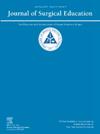Virtual Reality Simulation as a Tool for ENT Training: An Autoethnographic Study
IF 2.6
3区 医学
Q1 EDUCATION, SCIENTIFIC DISCIPLINES
引用次数: 0
Abstract
OBJECTIVE
To investigate the factors influencing a novice trainee's surgical skill acquisition using virtual reality (VR) temporal bone (TB) drilling simulation as a training tool. This study is the first application of autoethnography in the surgical simulation literature.
DESIGN
This study uses autoethnography to examine the factors underpinning simulated surgical skill acquisition using VR TB drilling (ethnography) through systematically documenting and analyzing the researcher's reflections over a prolonged period of time (autobiography). The primary researcher undertook 16 3-hour sessions learning to perform a virtual cortical mastoidectomy on the Voxel-Man TempoSurg (VMT) simulator over 8 months. Data collected comprised qualitative field notes and reflective journal logs, and quantitative scores from formative assessments. Data were coded using NVivo12 and analyzed using inductive thematic analysis.
SETTING
University Hospitals Birmingham ENT Simulation Dry Lab, Queen Elizabeth Hospital, Birmingham, United Kingdom.
PARTICIPANTS
The primary researcher, a surgical novice, was responsible for the study design and execution, with supervision from a consultant ENT surgeon and 2 simulation fellows.
RESULTS
The study yielded 6 themes: About 3 themes highlight new insights: 1) VMT as a surgical learning tool, 2) overcoming technological issues, 3) and physical impacts of simulated surgery; About 3 themes support existing evidence relating to surgical skill acquisition: 4) rushing leading to inaccuracy, 5) reflections and feedback, and 6) overcoming demotivation.
CONCLUSION
The application of autoethnography to the study of surgical skill acquisition is new. Our results enable a deeper insight into surgical skill acquisition using VR TB simulation, with 6 specific themes identified as impacting learning with this tool. An understanding of these factors will facilitate future research in this area, and enable constructive adjustments to the learning experience, ultimately improving training program delivery and outcomes going forward.
作为耳鼻喉科训练工具的虚拟现实模拟:一项自我人种学研究
目的探讨以虚拟现实(VR)颞骨(TB)钻孔模拟为训练工具,影响新手手术技能习得的因素。本研究是自体人种志在外科模拟文献中的首次应用。本研究通过系统地记录和分析研究人员在长时间内的反思(自传),使用自我民族志来研究利用VR结核钻孔(民族志)获得模拟手术技能的因素。在8个月的时间里,主要研究人员进行了16次3小时的学习,学习在VMT模拟器上进行虚拟皮质乳突切除术。收集的数据包括定性的实地记录和反思日志,以及形成性评估的定量分数。使用NVivo12对数据进行编码,并采用归纳主题分析方法进行分析。设置大学医院伯明翰耳鼻喉模拟干燥实验室,伊丽莎白女王医院,英国伯明翰。主要研究人员是一名外科新手,在一名耳鼻喉外科顾问医生和2名模拟研究员的监督下,负责研究的设计和执行。结果本研究共产生了6个主题,其中约3个主题突出了新的见解:1)VMT作为外科学习工具,2)克服技术问题,3)模拟手术的物理影响;大约有3个主题支持与外科技能习得有关的现有证据:4)匆忙导致不准确,5)反思和反馈,6)克服动机丧失。结论自体人种志在外科技能习得研究中的应用是一种新方法。我们的研究结果能够更深入地了解使用VR结核病模拟获得手术技能,并确定了使用该工具影响学习的6个特定主题。对这些因素的理解将促进该领域未来的研究,并对学习经验进行建设性的调整,最终改善培训项目的交付和未来的成果。
本文章由计算机程序翻译,如有差异,请以英文原文为准。
求助全文
约1分钟内获得全文
求助全文
来源期刊

Journal of Surgical Education
EDUCATION, SCIENTIFIC DISCIPLINES-SURGERY
CiteScore
5.60
自引率
10.30%
发文量
261
审稿时长
48 days
期刊介绍:
The Journal of Surgical Education (JSE) is dedicated to advancing the field of surgical education through original research. The journal publishes research articles in all surgical disciplines on topics relative to the education of surgical students, residents, and fellows, as well as practicing surgeons. Our readers look to JSE for timely, innovative research findings from the international surgical education community. As the official journal of the Association of Program Directors in Surgery (APDS), JSE publishes the proceedings of the annual APDS meeting held during Surgery Education Week.
 求助内容:
求助内容: 应助结果提醒方式:
应助结果提醒方式:


